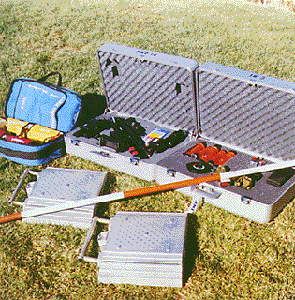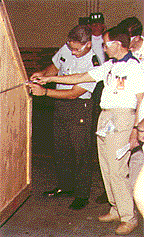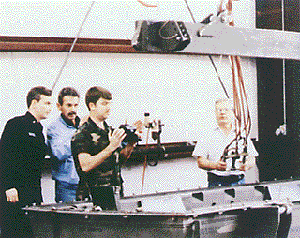| This
equipment allowed the inspectors to measure and, if
appropriate, weigh the missiles and support equipment and
facilities declared to be present at the site. The
objective was for the inspectors to ascertain that the
INF missiles and facilities were in fact those covered
under the treaty. Storage buildings, garages, trucks--all
were subject to measurement to discover if a treaty item,
a missile stage, for instance, had been stored in them.
All on-site inspections of active INF missile operating
bases or facilities involved visually inspecting,
measuring, and possibly weighing the INF missile systems
that were on site at the time of the inspection. The standard characteristics of these missiles and their supporting equipment had been declared in the treaty's Memorandum of Understanding.12 In that memorandum, both parties had published technical data for each INF system-length of the missile; length of first and second stages; maximum diameter; weight of first and second stages; maximum length, width, and height of launchers; and characteristics of the missile transporters, support equipment, and missile shelters. During baseline, these standard measurements were confirmed and, where necessary, corrected by one inspection team from the U.S. and one from the USSR. Commander John C. Williams, U.S. Navy, led the U.S. team and they conducted baseline technical data measurements on the six Soviet INF missile systems. The measurements made by this team became the standard used by all other U.S. teams as they conducted on-site inspections.13 |
 Inspection teams had to hand-carry all inspection equipment from the point of entry to the inspection sites. Shown here are the emergency first aid kit, Polaroid camera with film, flashlights, compass, seals, measuring tapes, measuring rod, and weighing scales.  SGT Stephen C. Prato, escort, assists and confirms measurement by Soviet inspector G.M. Komogortsev. |
